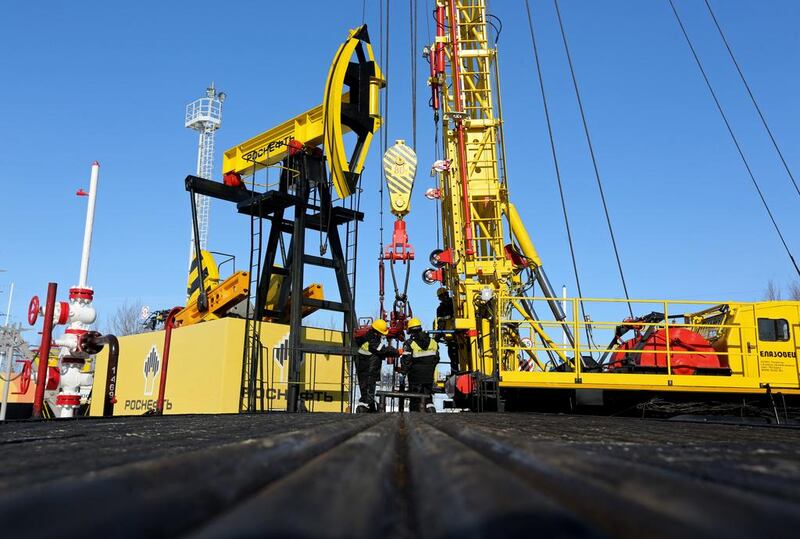Oil traders pricked up their ears at the recent hostilities in Syria. Charts and trading positions were readied. Expectations rose that volatility was near. More geopolitical risks followed shortly after; US-Russia tensions and threats from North Korea. Then Brexit and early UK elections made the headlines. Opec signalled it would keep tightening supplies of crude. In short, all the usual triggers for a price rise were there. But oil simply shrugged them off and stayed stubbornly subdued.
The old oversupply fears have come back to haunt the oil markets. Bulls and bears alike are disappointed. Price direction isn’t strong, trading sideways within a narrow range. Volatility is at a standstill at the moment, dampened by unexpectedly high gasoline inventories. The data in the week ending 14 April pushed crude down by more than 3 per cent.
Gasoline inventories went up by 1.37 million barrels to 532.3 million barrels, sparking a sell-off that was only stemmed by Opec’s production limit signals.
Opec is still aiming at $65 per barrel but we’re heading into May and the target has been missed. Oil keeps hovering in a range roughly between US$50 and $55 per barrel. The status quo is a price war between US shale and Opec producers plus Russia. It’s not just crude oil prices that are in a holding pattern. US energy stocks are under heavy pressure amid the bloated crude inventories, falling several points at the time of writing.
Where things could go from here is a matter of opinion but an indefinite holding pattern isn’t likely.
The bears view US shale and a stronger US D as the barrier to price increases, the industry shows no sign of slowing down or cutting back supplies. The US is reviewing sanctions on Iran and there’s a possibility they’ll be re-imposed. That’s probably a score for the bears. Increased production from Iran would just add to the glut. The bulls are looking for a real break, either in the form of geopolitical tensions or a supply disruption, even Asia’s upside growth.
But the IMF forecasts the price to stay around $55 per barrel until the end of next year. This view means that any short-term speculative spikes should be viewed with caution. There’s something to be said for a stable oil price. It gives GCC countries a relatively solid basis to plan their economic diversification, and an incentive to stay committed. If there is a significant rise in the oil price, it’s a bonus, but at the same time, a risk. A temporarily high oil price could be a source of false security. Considering the difficulties caused by the commodity’s losses after 2014, an overheated price could just lead to more economic and financial adventures.
A bust in the price would be the real problem for GCC countries. If inventories keep rising, Opec’s price bolstering will weaken and so would government revenues. Considering the alternatives, $55 per barrel is the middle of the road, the golden mean.
There’s little doubt that the oil markets are transitioning, there’s a new reality that has its own parameters. Among them are the most important factors; US shale supplies and US economic growth. At this stage, their sheer momentum is overshadowing the other, traditional influences over the oil prices such as geopolitical tensions.
Hussein Sayed is the chief market strategist at FXTM, an online foreign exchange brokerage.
business@thenational.ae
Follow The National's Business section on Twitter






